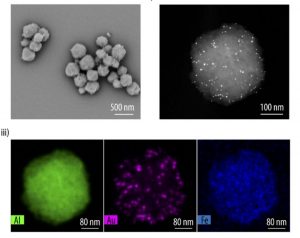X. Liu, N. P. Domingues, E. Oveisi, C. Coll-Satue, M. M. T. Jansman, B. Smit, and L. Hosta-Rigau, Metal–organic framework-based oxygen carriers with antioxidant activity resulting from the incorporation of gold nanozymes Biomater. Sci. (2023) doi: 10.1039/D2BM01405J

Abstract: Blood transfusions are a life-saving procedure since they can preserve the body’s oxygen levels in patients suffering from acute trauma, undergoing surgery, receiving chemotherapy or affected by severe blood disorders. Due to the central role of hemoglobin (Hb) in oxygen transport, so-called Hb-based oxygen carriers (HBOCs) are currently being developed for situations where donor blood is not available. In this context, an important challenge that needs to be addressed is the oxidation of Hb into methemoglobin (metHb), which is unable to bind and release oxygen. While several research groups have considered the incorporation of antioxidant enzymes to create HBOCs with minimal metHb conversion, the use of biological enzymes has important limitations related to their high cost, potential immunogenicity or low stability in vivo. Thus, nanomaterials with enzyme-like properties (i.e., nanozymes (NZs)) have emerged as a promising alternative. Amongst the different NZs, gold (Au)-based metallic nanoparticles are widely used for biomedical applications due to their biocompatibility and multi-enzyme mimicking abilities. Thus, in this work, we incorporate Au-based NZs into a type of HBOC previously reported by our group (i.e., Hb-loaded metal–organic framework (MOF)-based nanocarriers (NCs)) and investigate their antioxidant properties. Specifically, we prepare MOF-NCs loaded with Au-based NZs and demonstrate their ability to catalytically deplete over multiple rounds of two prominent reactive oxygen species (ROS) that exacerbate Hb’s autoxidation (i.e., hydrogen peroxide and the superoxide radical). Importantly, following loading with Hb, we show how these ROS-scavenging properties translate into a decrease in metHb content. All in all, these results highlight the potential of NZs to create novel HBOCs with antioxidant protection which may find applications as a blood substitute in the future.